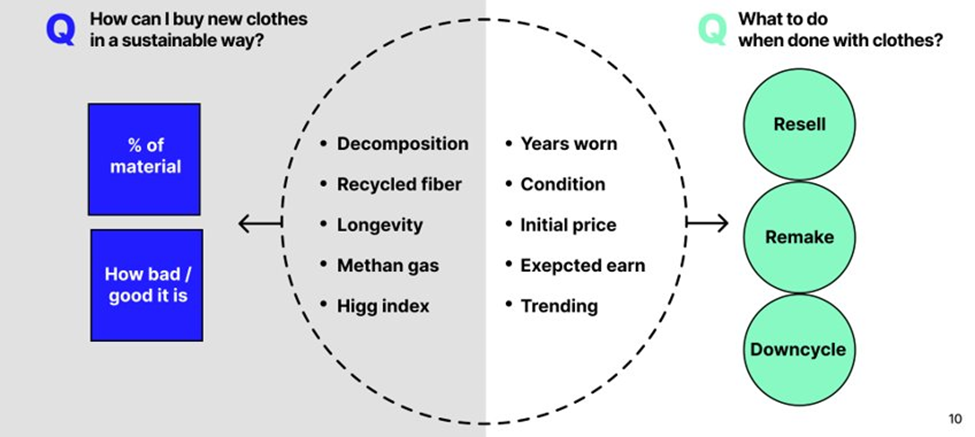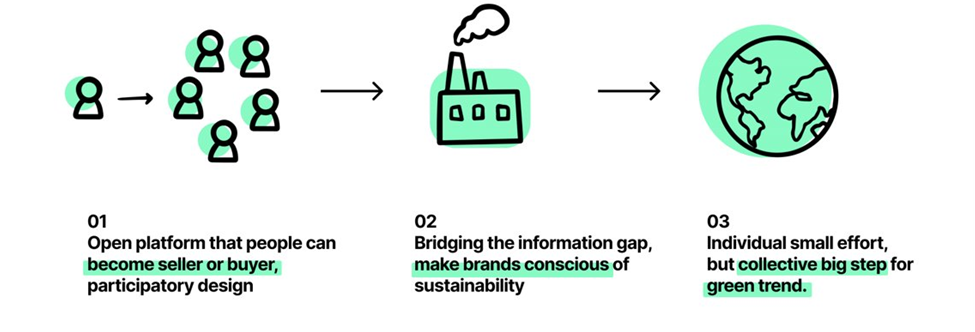Harvard Data Visualization: LOOP
- Allison K
- Oct 15, 2022
- 2 min read
Updated: Jan 3, 2023
For Harvard's Master in Design Engineering program, our main course is "studio" where we create problems around a certain domain. For this year, our focus is on textile ecologies and the first project is a data visualization.
My partner and I decided to create a platform for users, specifically Gen Z and Millennials, to become involved in circular fashion (Figure 1). This is the practice of closing the loop on your clothing by not throwing them away, but instead reusing them over and over again. This will help cut down on the waste problem from clothing and benefit the economy.

Figure 1. Circular fashion illustration
As part of our research, we interviewed the manager of the Goodwill headquarters in Boston and received a tour of the facility. It was understood that no clothes are wasted in this organization - the ones that are not sold, are sent to an automotive company to be downcycled. An interview was also conducted for a Depop influencer to further see if there are any gaps in the current system.
For our product, the user can first upload their clothing that they want to get rid of. After answering a few simple questions, a calculation will be automatically done to categorize the clothing as either best to resell, remake, or downcycle. In our design, trash is never an option.
When the user would like to buy new clothes, they can upload links for ones they are looking at from several stores. The product will then scrape for the material type and rate the clothing on the impact of it. It gives a gray scale bar graph with black being the worst, and the white is if the user buys the clothing completely second hand.
Here is the breakdown for what we considered when creating the algorithm (Figure 1):

Figure 2. Algorithm for Circular Fashion
The goal of our project is to promote this sustainable lifestyle for clothing. If individuals can start to make this contribution and understand which brands are hurting the Earth, then companies will start to rethink their fast fashion style as well. If brands are receiving negative feedback from customer's about how they are not sustainable enough, they will have no choice but to start to rethink their actions. Hopefully, they will also all start working towards circular fashion as well. With all of this effort, our planet can be kept happy and healthy:

Figure 3. Impact from micro to macro
This video shows a demo of our final product (Figure 3):
Figure 4. Final demo video




Comments